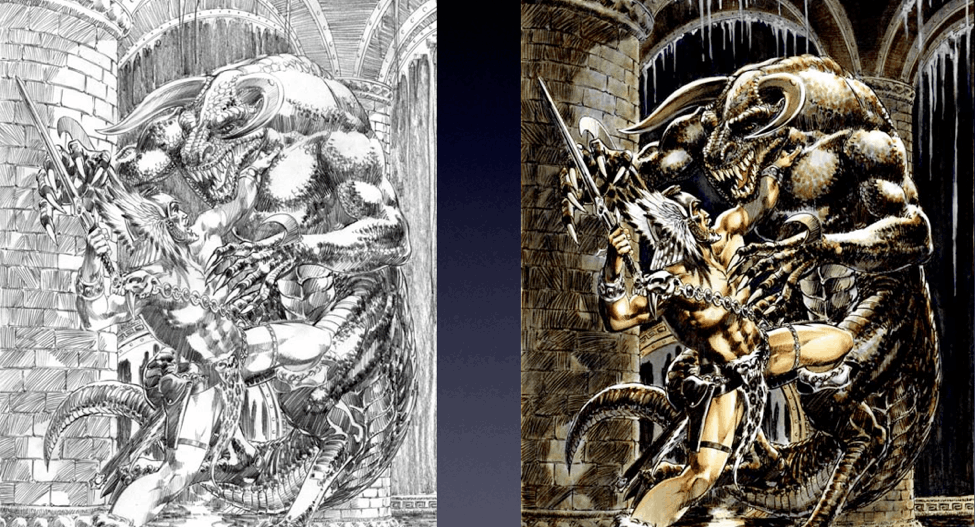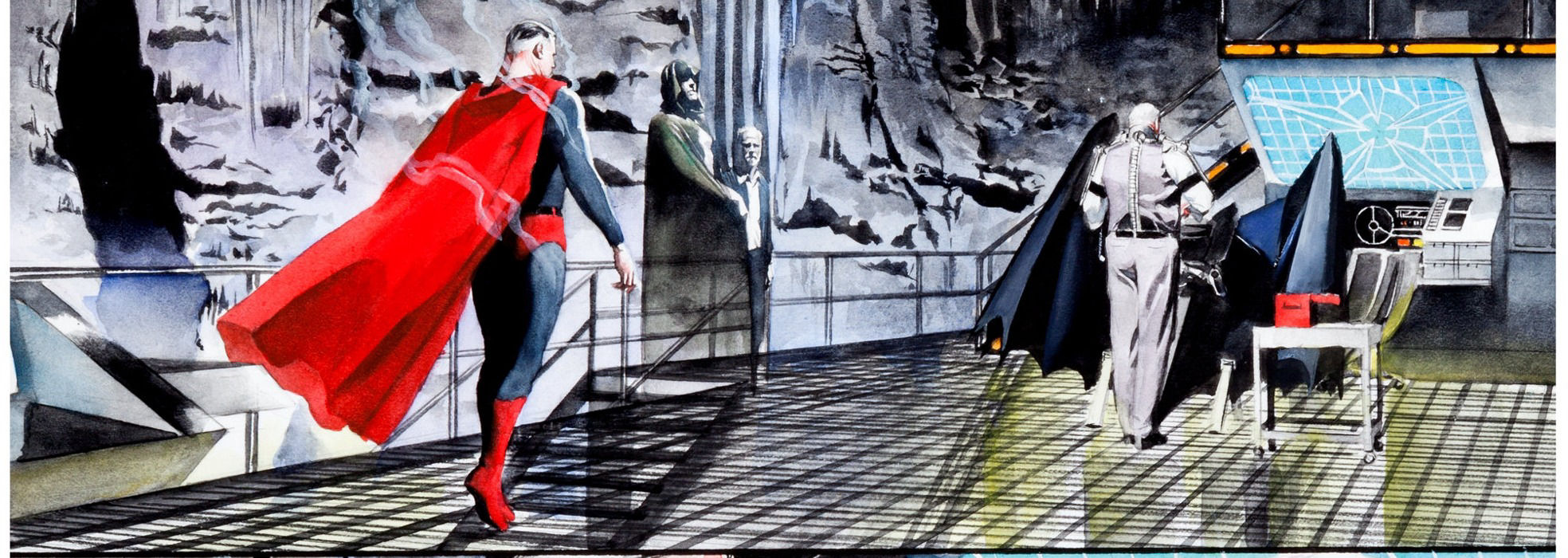
GRAPHIC NOVELS
COLORING
In this essay we’re going to talk about coloring your graphic novel. Up until now we’ve been building the foundation but now you’re going to put some icing on this cake and it will tie all the elements together. Color is a very powerful element to your storytelling. Because of this you should have someone on your team who can add this important layer and level to your work with some amount of skill. This means you need to have someone who can tell the difference between warm and cool colors, complimentary and contrasting colors, and even the subtly of color and how it works as a story element.
Why is this important? Think about this. You have just written a great hard-nosed murder mystery. It’s dirty. It’s gritty. It’s just awesome. You can’t wait to get it finished and tell the colorist to make it stand out above the crowd.
Your colorists hears those words and decides that the most obvious way to make this happen is to color it in different shades of pink. You can imagine how the color choice would impact the over all look and feel of the book. Now unless you were doing this sort of work for, say a breast cancer event or something, it might not be understood and could very well ruin your hard-nosed murder mystery. So, make sure you get a colorist who knows what they are doing.
Remember when I mentioned it was a good idea to keep your reference bible pages in color? Here is where it comes in handy. You can give this same information to the colorists and they can sample the colors and make it look just like your example, keeping everyone on the same page and saving time and money in the process.
Now I’m not going to get into the nitty gritty of how to do coloring. Number one, it’s pretty complicated depending on what you what to achieve. Number two, I’m not a colorist so I wouldn’t be the best person to give you that sort of information. However, I do know two great folks who can definitely shed more light on the subject. In fact they wrote a book about it—two actually. You can find out more about them by going here. And, of course, as I mentioned in my last essay, you can also explore the DC Comics Guide to Coloring and Lettering.
What I will talk about in the remainder of this essay are the various types of methods that can be used for coloring your work.

HAND COLORING
Hand coloring is something that has been around since the dawn of comics—well of art really. The idea is to take something and just color it with paint, water color, crayons, whatever. Normally in comics this was colored ink set up in a dot pattern that was then printed on newsprint. From there it has moved into the digital age but some folks still do hand coloring as shown in this example done by Mike Grell, for his Warlord comic from DC comics.
As you can see, color really helps bring in the finer qualities of the work and tells the reader what they are seeing with some greater detail. The organic nature of the coloring also lends a unique texture all its own that is often not common to sequential work save perhaps when it comes to covers.
There is an exception to that, however, this being with Alex Ross (see below) and others who look to emulate really what he started, that is making hand painted pages—literally painting each panel on the page by hand.
You don’t see such a method use too often for various reasons but when you do it really stands out and makes the work take on a whole new dynamic that really helps set the story apart.

DIGITAL COLOR
Most graphic novels fall into this category because it’s cheaper and faster. It also allows for easier corrections. For example, if you had something painted or drawn and then saw that the villain really was supposed to be purple-skinned instead of green that might cause some trouble in changing the art. Or let’s say you just wanted to see a side-by-side comparison of two different coloring options. With digital coloring you could have a simple click of a mouse (or tap of a digital pen) and you’d get your wish.
The downside with this is that it is all done on the computer so if you lost the files or they were corrupted or anything else took place to hinder you from gaining access to them, they’re gone unless you have hard copies or some sort of backup in place. And then there is the matter of storing them. Sure you can zip them down some but you still have to put them somewhere and that will take up space. And if you’re doing more than one graphic novel or just a really big one your storage needs could really increase exponentially.
Again, I’m not an expert on all this so I thought I’d send you over to a guy who is. He’s a professional comic artist named Freddie E Williams who does all his work—that’s everything from pencils to inks to color—on the computer. He also wrote about how to do it and work with this new sort of “non-tangible” system in a recent book entitled: The DC Comics Guide to Digitally Drawing Comics.
Remember earlier when I mentioned how subtle things in coloring can make a big difference? I thought to share and example from Sons of Ashgard: Ill Met in Elmgard. During the coloring process the colorist and myself got the day and night aspect of a couple pages mixed up, resulting in a page that was suppose to be taking place in the day being colored to take place at night instead. As you can see from the two pages while they are bascially colored the same the subtle changes of light sources and tones of said light sources makes for a very different impression.



